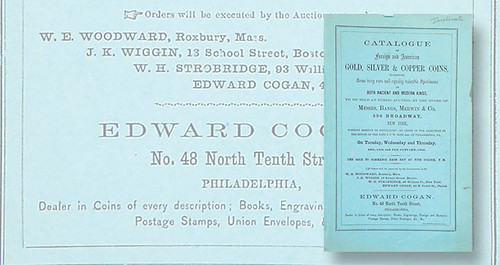
PREV ARTICLE
NEXT ARTICLE
FULL ISSUE
PREV FULL ISSUE
DAVID FANNING ON PRINTED AUCTION CATALOGSA January 7, 2017 Coin World article by David Fanning summarizes the appeal of printed auction catalogs. -Editor
 Many collectors today purchase items for their collections via auctions held by professional coin firms. Today, that can mean different things. Perhaps you enjoy the experience of bidding online, where you can blow up a photo of a coin to many times its actual size, examining every nook and cranny to make sure it’s what you want. Or perhaps you feel that there is no substitute for seeing the actual coin being offered and participate in auctions held at major coin shows where lot viewing is available. You can submit your bids in person, online, through email, over the phone, via fax, and so on. The options can seem limitless. One thing most professional auctions have in common, though, is a printed catalog. While Internet-only sales are increasingly popular and have their place, the printed catalog retains an important place in numismatics, providing a permanent record of significant collections and sales. Indeed, one could quite easily argue that auction catalogs provide much of the history of our hobby. Early auction catalogs in this country were simple affairs, with listings of coins that seem to readers today to be remarkably brief and more than a little lacking in detail. First appearing in substantial form in the 1850s, the facts in these catalogs are occasionally a little off (or a lot off!), and grading was quite a bit different than it is today. Before the late 1860s, they were unillustrated, and they were only infrequently illustrated after that. However, numismatic auction catalogs of our hobby’s infancy provide us with an invaluable foundation. Reliable price guides didn’t exist yet, so collectors in attendance at sales tended to make careful note of what specific coins sold for. They also often recorded the buyer of each lot. Some auction houses, to monetize what would otherwise be wastepaper, hired clerks to hand-price catalogs after the sale, and made the resulting priced copies available for purchase by interested parties. Collectors today are increasingly aware of the value of provenance information: being able to trace the ownership of a particular coin back in time. Annotated copies of early auction catalogs are often the only way we can extend a coin’s ownership history beyond the point when photographs of coins became a common feature in catalogs. Auction catalogs provide us with more than a way to trace the ownership of coins, however. They also provide us with a snapshot of the hobby at a particular time and place. It can be important sometimes to be able to say what we knew and when we knew it, or what we thought we knew at a particular time. Numismatics is a science, and, as such, we are constantly revisiting our understanding of the facts upon which we base our hobby. We can watch the story of coinage develop before our eyes as we read these catalogs. To read the complete article, see: Wayne Homren, Editor The Numismatic Bibliomania Society is a non-profit organization promoting numismatic literature. See our web site at coinbooks.org. To submit items for publication in The E-Sylum, write to the Editor at this address: whomren@gmail.com To subscribe go to: https://my.binhost.com/lists/listinfo/esylum All Rights Reserved. NBS Home Page Contact the NBS webmaster 
|